A current - carrying wire of certain length is bent to form an arc that substends an angle θ at the centre. Let B be the magnetic field at the centre due to this wire. The correct graph between B and θ is
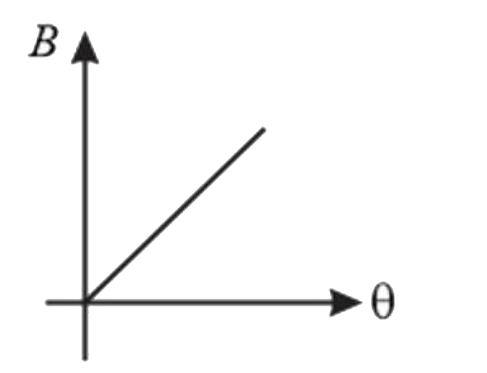
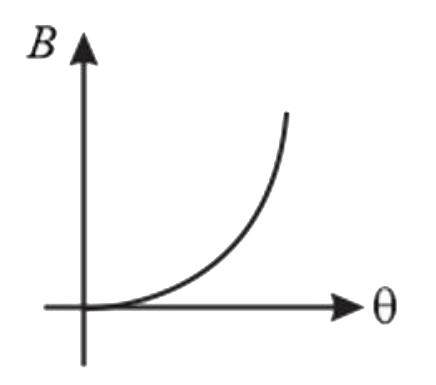
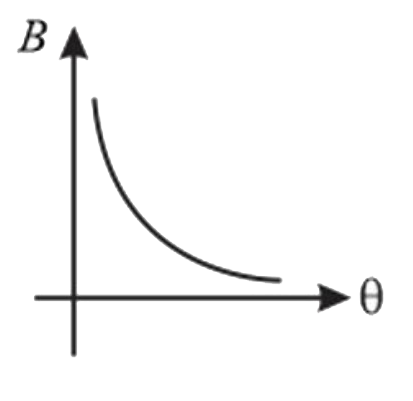
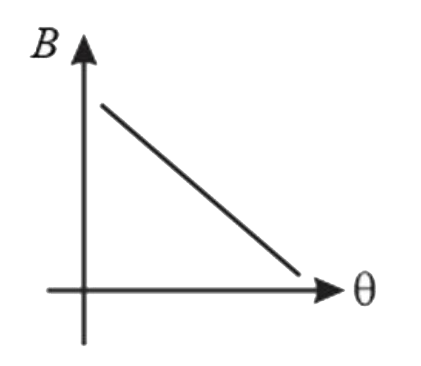
The correct Answer is:B
To solve the problem, we need to determine the relationship between the magnetic field B at the center of an arc of a current-carrying wire and the angle θ that the arc subtends at the center.
1. Understanding the Arc Length:
The length L of the arc is given by the formula:
L=r⋅θ
where r is the radius of the arc and θ is in radians.
2. Expressing the Radius in Terms of Length and Angle:
Rearranging the above equation gives:
r=Lθ
3. Magnetic Field Due to the Arc:
The magnetic field B at the center of the arc due to a current I flowing through it is given by:
B=μ0I2r⋅θ2π
where μ0 is the permeability of free space.
4. Substituting for Radius:
Substitute r=Lθ into the equation for B:
B=μ0I2⋅Lθ⋅θ2π
Simplifying this gives:
B=μ0I⋅θ4πL
5. Identifying the Relationship:
From the equation B=k⋅θ where k=μ0I4πL, we can see that B is directly proportional to θ.
6. Considering the Range of θ:
As θ increases, B also increases linearly. However, if we consider the case where θ approaches zero, B will also approach zero.
7. Graphing the Relationship:
The graph of B versus θ will be a straight line passing through the origin (0,0) and will have a positive slope.
Conclusion:
The correct graph between B and θ is a straight line that passes through the origin.
The length L of the arc is given by the formula:
L=r⋅θ
where r is the radius of the arc and θ is in radians.
Rearranging the above equation gives:
r=Lθ
The magnetic field B at the center of the arc due to a current I flowing through it is given by:
B=μ0I2r⋅θ2π
where μ0 is the permeability of free space.
Substitute r=Lθ into the equation for B:
B=μ0I2⋅Lθ⋅θ2π
Simplifying this gives:
B=μ0I⋅θ4πL
From the equation B=k⋅θ where k=μ0I4πL, we can see that B is directly proportional to θ.
As θ increases, B also increases linearly. However, if we consider the case where θ approaches zero, B will also approach zero.
The graph of B versus θ will be a straight line passing through the origin (0,0) and will have a positive slope.
The correct graph between B and θ is a straight line that passes through the origin.
Similar Questions
An arc of a circle of raduis R subtends an angle π2 at the centre. It carriers a current i. The magnetic field at the centre will be
View SolutionA battery is connected between two points AandB on the circumference of a uniform conducting ring of radius r and resistance R . One of the arcs AB of the ring subtends an angle θ at the centre . The value of the magnetic induction at the centre due to the current in the ring is
View SolutionA current carrying wire AB of the length L is turned along a circle, as shown in figure. The magnetic field at the centre O.
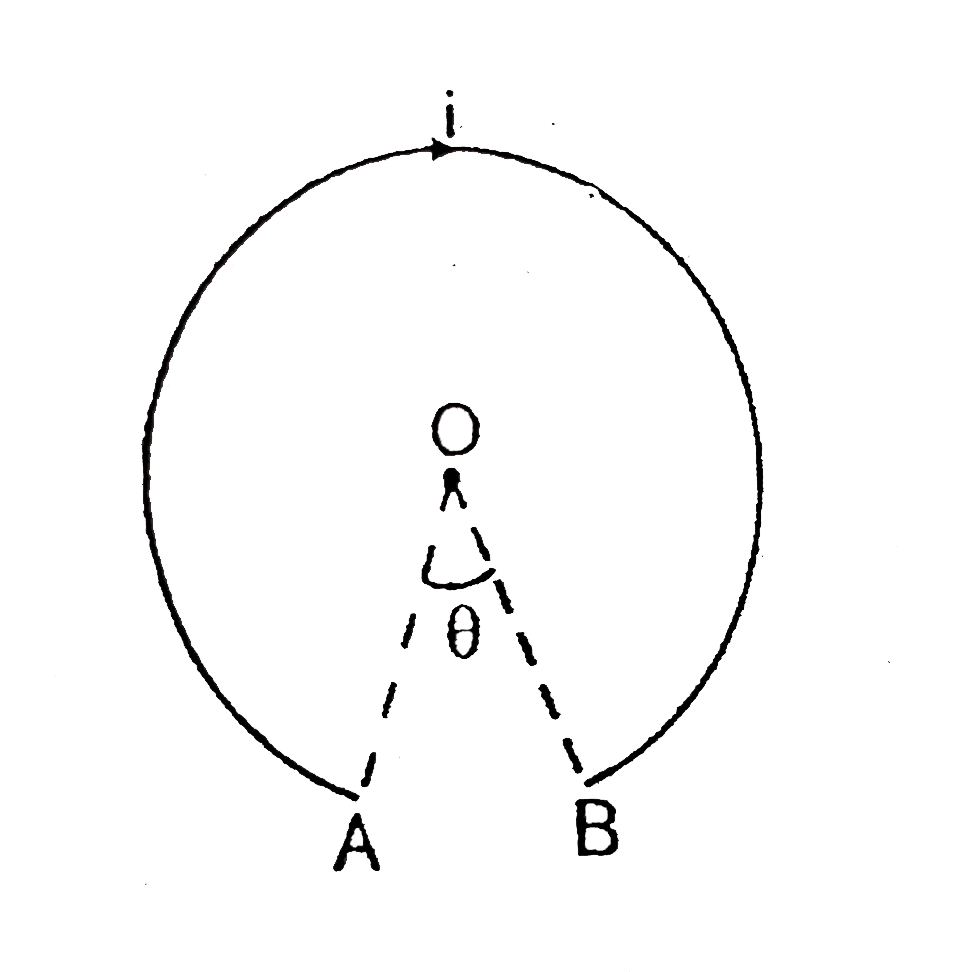
View SolutionA piece of wire carrying a current of 6.00 A is bent in the form of a circular arc of radius 10.0 cm, and it subtends an angle of 120∘ at the centre. Find the magnetic field B due to this piece of wire at the centre.
View SolutionA current carrying wire is bent in the L shapes as shown in figure. The length of both arms extend to infinity. Then, the magnetic field at O is-
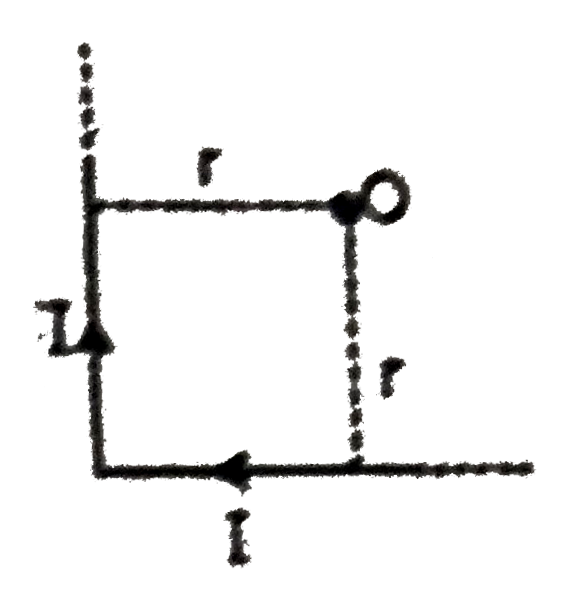
View SolutionA piece of wire 20 cm long is bent into the form of an arc of a circle, subtending an angle of 60∘ at its centre. Find the radius of the circle.
View SolutionA current i ampere flows in a circular arc of wire whose radius is R, which subtend an angle 3π/2 radian at its centre. The magnetic induction B at the centre is
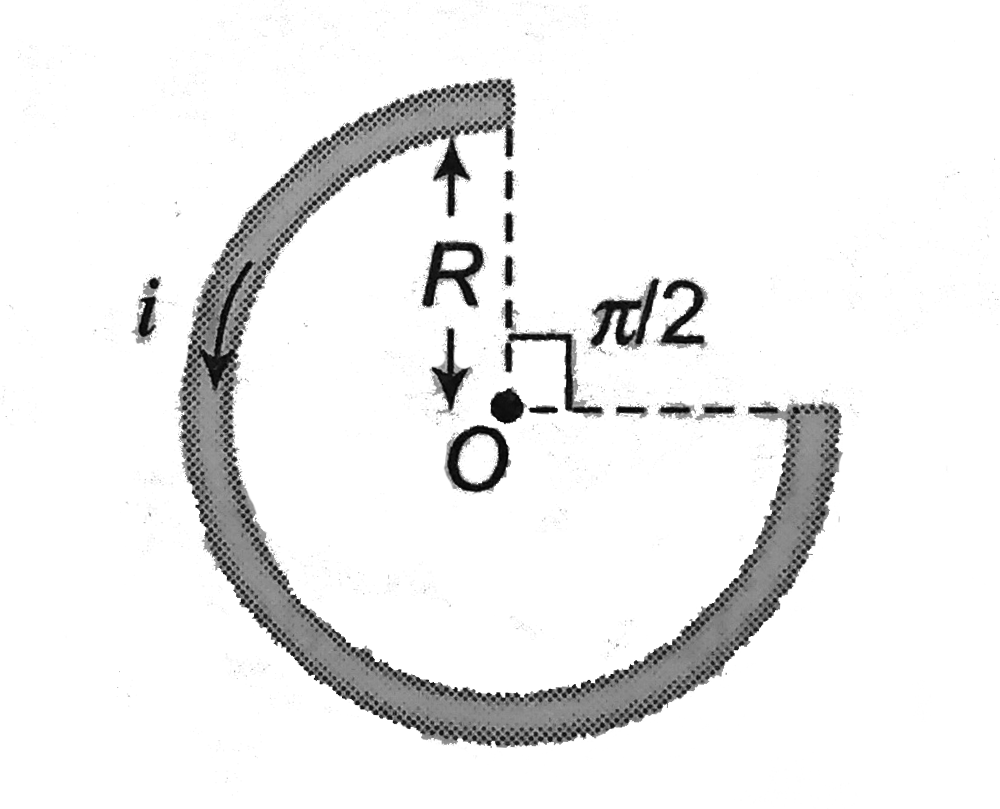
View SolutionA current i ampere flows in a circular arc of wire whose radius is R, which subtend an angle 3π/2 radian at its centre. The magnetic induction B at the centre is

View SolutionA part of a long wire carrying a current i is bent into a circle of radius r as shown in figure. The net magnetic field at the centre O of the circular loop is :

View SolutionA rectangular loop of metallic wire is of length a and breadth b and carries a current i. The magnetic field at the centre of the loop is
View Solution
